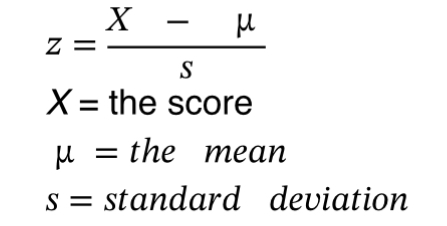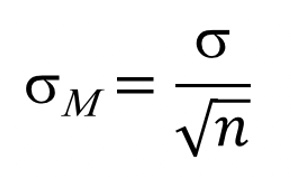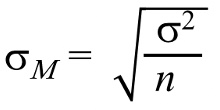ch. 5, z-scores
1/12
There's no tags or description
Looks like no tags are added yet.
Name | Mastery | Learn | Test | Matching | Spaced |
|---|
No study sessions yet.
13 Terms
define z-score
combining the mean and standard deviation into one score, transforming x (the raw score) into z-scores
2 purposes of z scores
see the position of a score within a distribution
this is helpful to identify outliers (participants who are extreme compared to the rest of the sample)
to standardize the entire distribution
this is helpful when scores are not marked on the same task (for example one test is marked 0-10 and another is 0-16). z-scores allow us to see them as they fall on the same distribution
formula for z score

to change z-scores back into x scores
X = μ + zσ
distribution of sample means
the collection of sample means from all possible random samples (of a particular size) that can be obtained from a population
central limit theorem
allows us to estimate if the sample mean is normal without testing the entire population mean.
2 conditions for central limit theorem (only 1 needs to be met)
the population from which the samples are selected is a normal distribution (used in specific scenarios like IQ scores)
the sample size (n) is at least 30
this tends to lead to a normal distribution regardless the population distribution shape
standard error of M
the average distance between a sample mean and population mean
tells you how well your sample represents the population
formula for standard error

small standard error means …
sample means are closer together
the sample mean is a more reliable estimate of the population
larger standard error means …
sample means are more spread out
sample mean is a less reliable estimate of the population
law of large numbers
as a sample size increases, standard error decreases
a larger sample is better able to represent the population
calculating standard error from the variance
